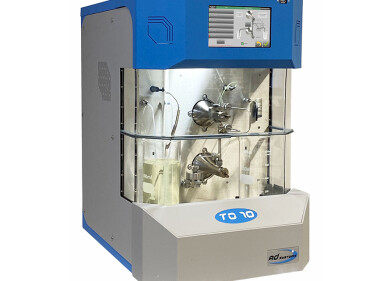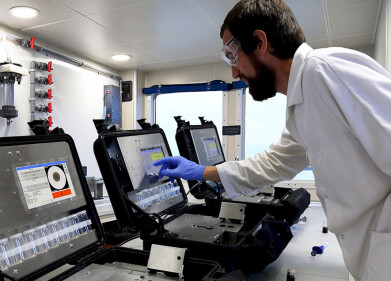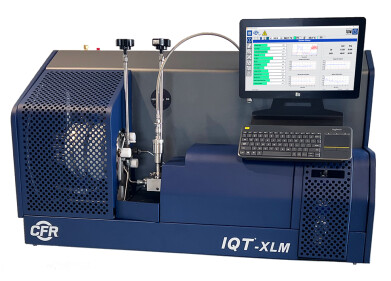Fuel analysis
Why is Jet Oil Tested?
Jul 29 2022
From identifying engine component wear to minimising operational costs, jet oil testing is vital in the aviation sector. Read on to find out more about why jet oil is tested and what’s next for the industry.
Identify wear metal trends
Testing engine lubricants is one of the most effective ways to identify wear metal trends. Oil Condition Monitoring (OCM) testing data is used to isolate problems and detect deterioration in specific components.
Detect airborne contaminants
As well as particles released by metal components, jet oil can be compromised by airborne contaminants such as volcanic ash. OCM testing helps detect contamination before it causes serious damage to the engine.
Selecting the right fuel grade
Not all jet fuels are created equal, with different characteristics making some more suitable than others. Freezing point is one of the most important parameters assessed during jet fuel testing. Data is used to classify fuels as Jet A or Jet A-1. The latter has a lower maximum freezing point and won’t crystalise when exposed to cold temperatures. This makes it suitable for long haul routes that pass over polar regions and reach high altitudes where air temperatures fall below -30°C.
Optimising efficiency
Fuel is one of the biggest expenses absorbed by airline companies. For example, when cruising a four-engine Boeing 747 Jumbo Jet burns around 10 tonnes of fuel an hour. This translates to around four litres per second. Depending on the cost of fuel, a flight from London to New York costs around £19,000. Every second spent in the sky costs money, which makes fuel optimisation a top priority for airlines.
Jet oil testing helps aviation companies select the most efficient fuels for the engine and flying conditions. The early detection of metal wear trends and airborne contaminants also plays an important role in optimising engine efficiency.
Developing sustainable aviation fuels
Sustainable aviation fuels (SAFs) have a pivotal role to play in addressing climate change, reducing reliance on petroleum-derived fuels and slashing the sector’s carbon footprint. Jet fuel testing is used to help SAF companies meet the strict standards enforced by aviation authorities, such as the US Federal Aviation Administration (FAA). For example, the ASTM D4054 Standard Practice for Evaluation of New Aviation Turbine Fuels and Fuel Additives is used to test the properties and performance of SAF products and determine suitability for aircraft.
“The very rigorous and comprehensive test program defined in D4054 is necessary due to the critical role that jet fuel plays in the safe operation of an aircraft,” asserts an article published in the journal Frontiers in Energy Research.
The aviation industry has an enormous carbon footprint and accounts for a significant percentage of global CO2 emissions. To address this issue, fuel engineers are exploring the use of alternative energy sources like ammonia. Find out more about the exciting potential of the high energy density substitute, as well as the key obstacles faced by the industry, in ‘3 Challenges with Ammonia Fuel’. Or if you want to know more about the SAF movement, Dr. Raj Shah, an expert at Koehler Instrument Company, spotlights the latest innovations in ‘Recent Advances in the Sustainable Aviation Industry’.
Digital Edition
PIN 25.5 Oct/Nov 2024
November 2024
Analytical Instrumentation - Picturing Viscosity – How Can a Viscometer or a Rheometer Benefit You? - Sustainable Grease Formulations: Evaluating Key Performance Parameters and Testing Method...
View all digital editions
Events
Jan 20 2025 San Diego, CA, USA
Jan 22 2025 Tokyo, Japan
Jan 25 2025 San Diego, CA, USA
SPE Hydraulic Fracturing Technology Conference and Exhibition
Feb 04 2025 The Woodlands, TX, USA
Feb 05 2025 Guangzhou, China



















